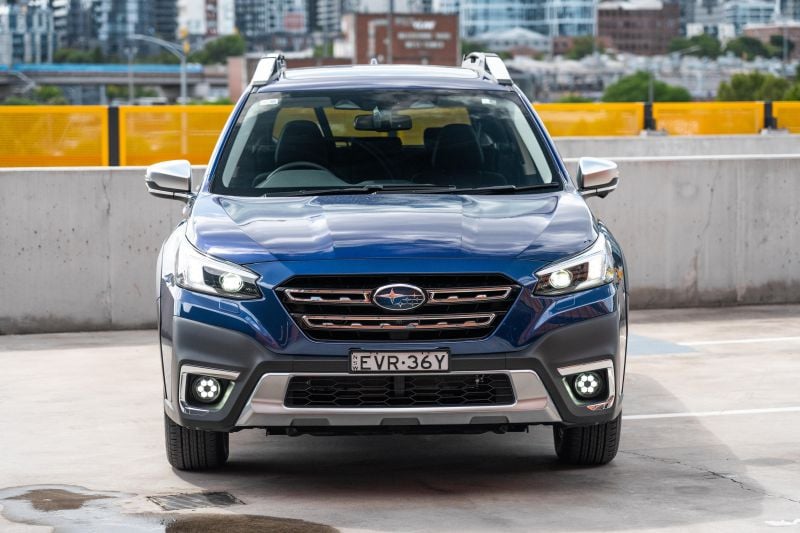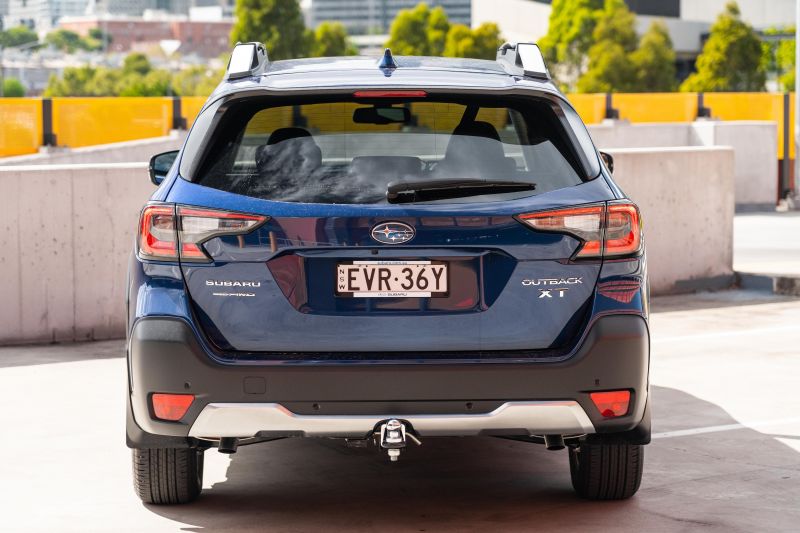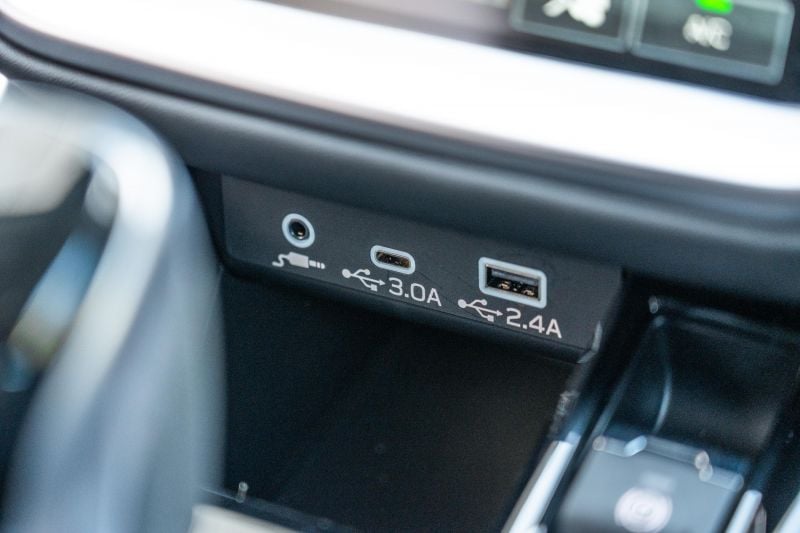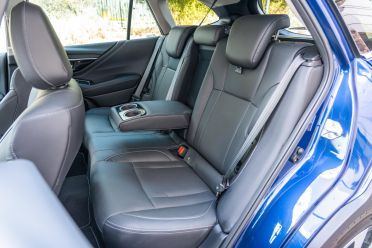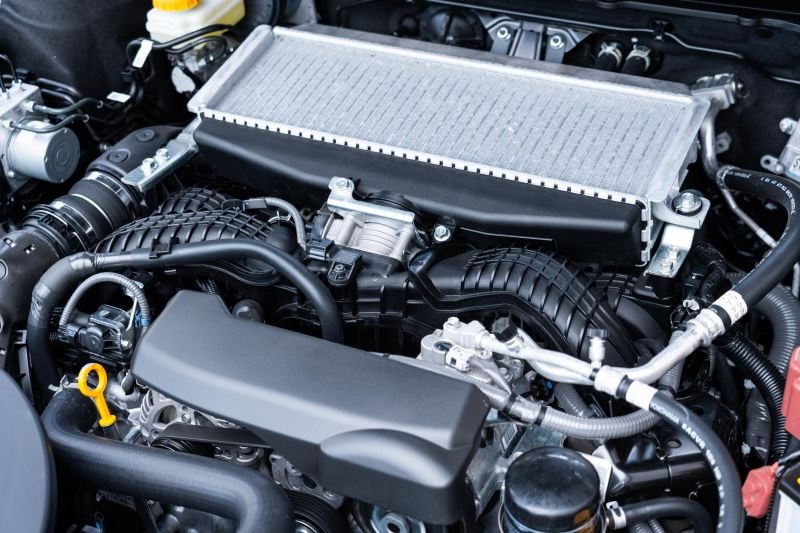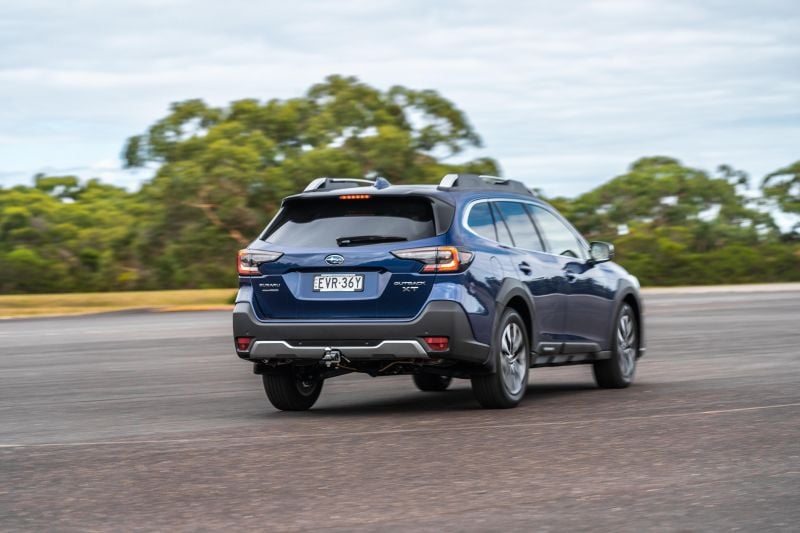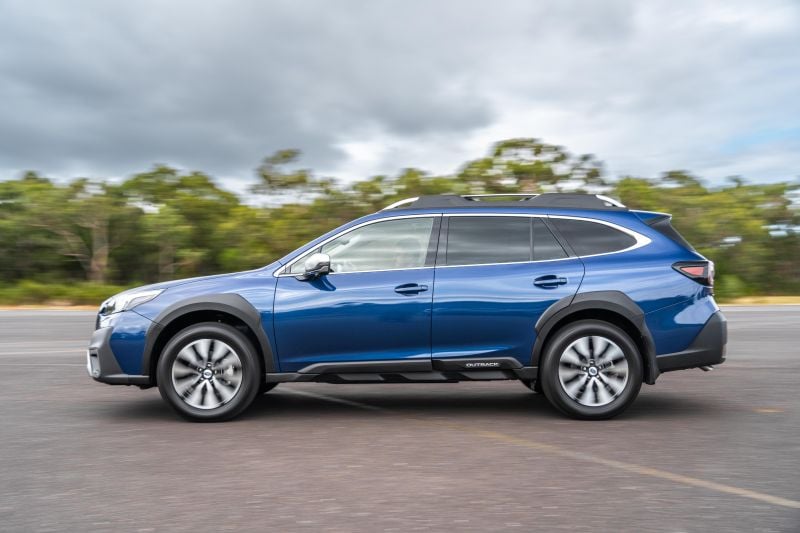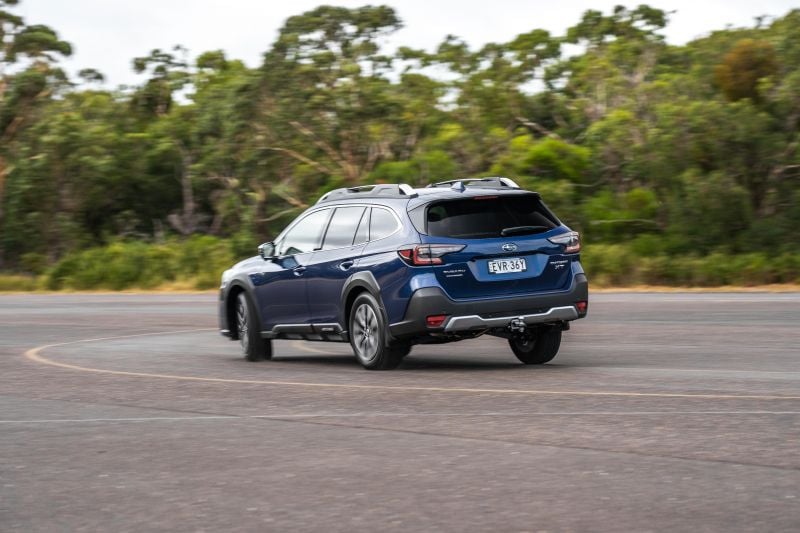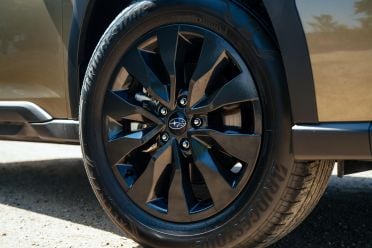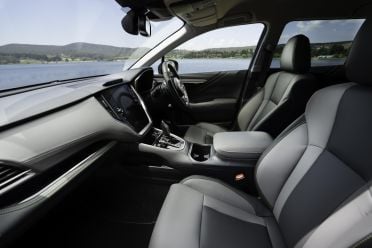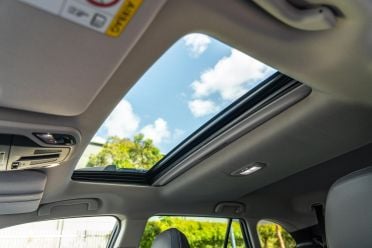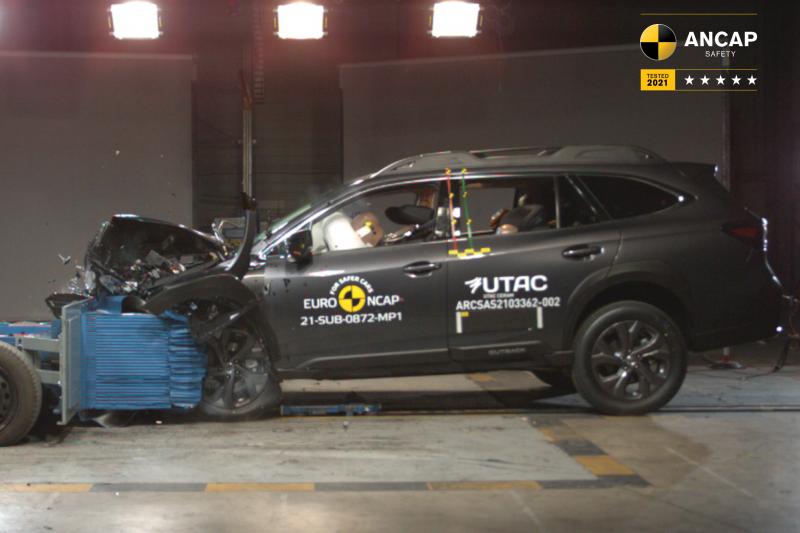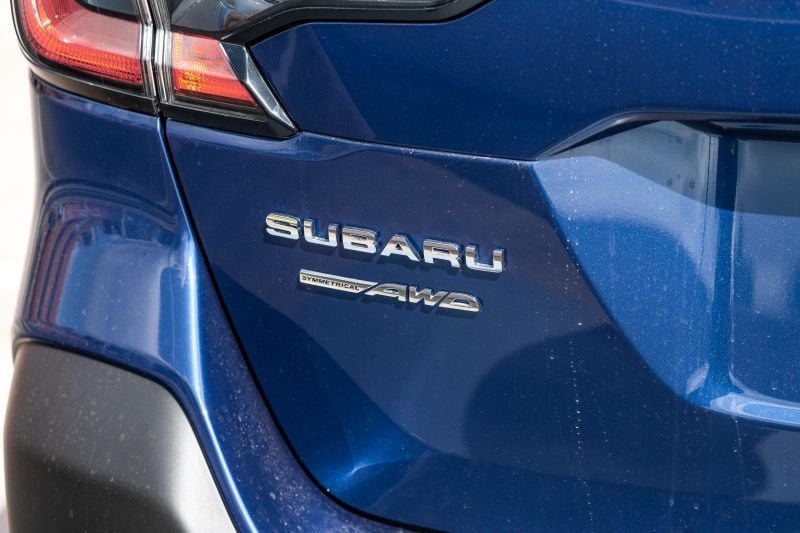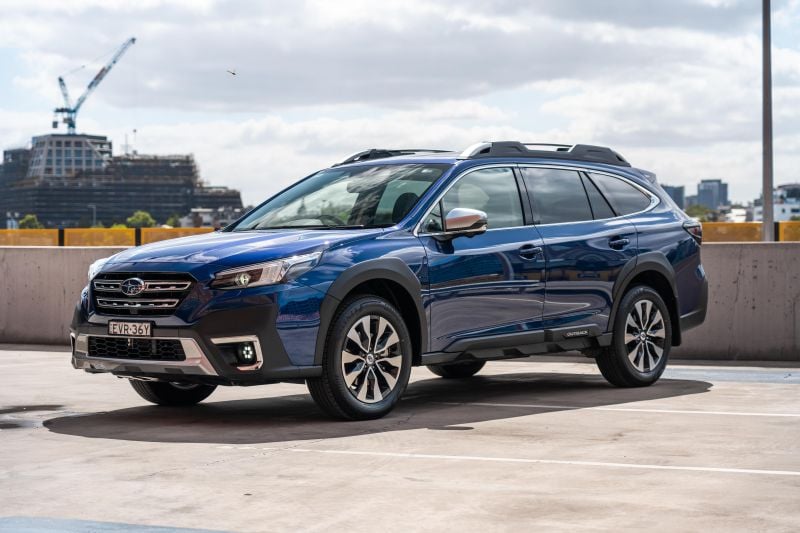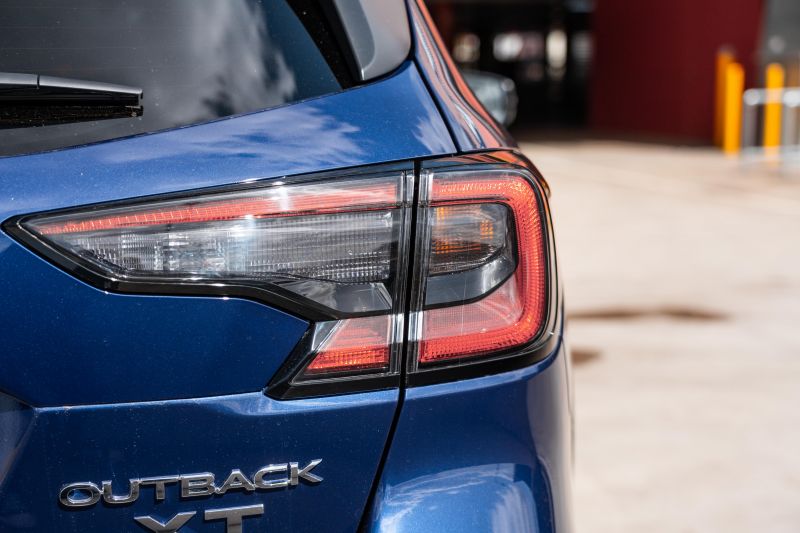Last time I reviewed the Subaru Outback I said it needed a boost – well, my prayers have been answered.
Earlier this year Subaru’s local division finally added a turbocharged engine option that had previously been reserved for the North American market, addressing what was arguably one of the Achilles heels of the new-gen crossover wagon.
It brings with it a welcome boost in power and torque, and bumps the Outback into better contention against an array of segment rivals that offer similarly powerful six-cylinder and turbocharged four-cylinder engines.
Here on test we have the absolute flagship of the current range – the 2023 Subaru Outback AWD Touring XT.
The XT badge brings a successful nameplate to Subaru’s local range, previously adorning turbocharged variants of the smaller Forester featuring WRX power under the bonnet. It’s a similar story here.
Is this just what the doctor ordered for what already was a capable, compelling package?
How much does the Subaru Outback AWD Touring XT cost?
The top-spec Outback AWD Touring XT is priced from $55,990 before on-road costs.
If you want the cheapest Outback XT variant, the Sport grade is $3800 less at $52,190 plus on-roads.
While the Outback is classed as a Large SUV by VFACTS, there are few direct rivals at this price point that offer the jacked-up crossover wagon form factor.
Perhaps its closest rival is the Volkswagen Passat Alltrack, which starts at $51,390 for the base 162TSI and climbs to $63,390 for the 162TSI Premium which is arguably this Touring grade’s equivalent rival. You can read our comparison between the Outback AWD Sport XT and Passat Alltrack 162TSI here.
Beyond that you need to step up into the Audi A4 allroad 45 TFSI quattro ($78,169) or the Volvo V60 Cross Country Ultimate B5 ($69,490) which are significantly more expensive.
2023 Subaru Outback pricing:
- Subaru Outback AWD: $42,690
- Subaru Outback AWD Sport: $47,190
- Subaru Outback AWD Touring: $50,990
- Subaru Outback AWD Sport XT: $52,190
- Subaru Outback AWD Touring XT: $55,990
Prices exclude on-road costs
What is the Subaru Outback AWD Touring XT like on the inside?
If you’ve sat in any high-spec Outback in this current generation, it’s business as usual.
As I said in my review of the non-turbo AWD Touring last year, the latest Outback is a return to form for Subaru, with quite an upmarket look and feel for not a whole lot of money relative to the segment.
In the Touring models you get lovely Nappa leather upholstery with perforated inserts, which feature heating and ventilation functions in addition to power adjustment with driver memory presets.
It definitely harks back to the luxurious interiors of the 4GEN Liberty and Outback of the 2000s, which were proper competitors for the likes of Audi and BMW back in the day.
The flagship Outback’s ambience is further elevated by the stitched leather-look surfaces lining the centre tunnel and dashboard, as well as the padded armrests in the door and the chunky front-centre rest that hides a massive storage area.
Ahead of the driver you get old-school analogue gauges flanking a small-ish TFT trip computer display, which can show a variety of menus including driving data, assistance systems and the like. It all works well, though it’s not as high-tech as the massive centre touchscreen.
Subaru offers a swish 12.3-inch LCD digital cluster in Japan, though we don’t know if or when it’ll make it to Australian models. It’s a similar story for the related WRX Sedan and Sportswagon – the latter known abroad as the Levorg.
The 11.6-inch vertical touchscreen infotainment system has a whiff of Tesla Model S about it in terms of integration with the dashboard, but it’s otherwise pretty standard Subaru fare with its colourful tiles and simple connectivity options including wireless Apple CarPlay and Android Auto.
We found smartphone mirroring worked flawlessly, even if the upright orientation takes a moment to get used to since it looks like a big iPad. There’s also DAB radio and embedded satellite navigation, which tends to beep and bong at you every time you approach a road safety camera.
Overall Subaru’s interface is fine without being standout. The bright colours and good graphics are nice, but occasionally load times can be a touch laggy and the fonts look like they’ll date quickly.
Storage is also fine but not quite up there with the best-in-segment.
There’s a shallow cubby under the infotainment display that can half fit a big phone, and there’s no wireless charging pad to keep you juiced while using smartphone mirroring. Thankfully, AUX, USB-A and USB-C ports all feature.
A couple of cupholders split the gap between the shifter and front-centre armrest, and the door pockets are pretty deep but may not fit larger bottles.
There’s a slim shelf ahead of the passenger that can fit phones and wallets, and the deep front-centre cubby can swallow even larger items.
I also have to knock Subaru’s insistence on a small moonroof rather than going for a more Euro- or Korean-style panoramic unit. Think of the children!
Things are better in the second row, where the Outback’s long body and wheelbase affords a fair bit of passenger space, even against segment rivals.
Large adults will fit behind larger adults, and it’s complete with heating, reclining seatbacks, air vents, and two 2.1A USB charge ports. Subaru hasn’t added a third zone of climate control, but there are directional vents which covers that base.
There’s a fold-down centre armrest with cup holders, ISOFIX anchors on the outboard seats as well as top-tethers on the back of all three rear seats.
The skinny middle seat probably is where the Outback falls behind more traditional SUV competition with wider bodies, but kids will be fine there even with the big transmission hump in the floor. Perhaps more annoying is the roof-mounted centre seatbelt feed, which just feels well… cheap.
All versions of the Subaru Outback quote 522 litres of cargo capacity with the rear seats in place, expanding to a healthy 1711L with the back seats folded – though the latter measurement is to the ceiling, it’s 1267L to the top of the seatbacks.
There’s a small netted cubby to stow smaller items, a 12V socket, luggage hooks as well as remote release levers for the rear seats. I successfully transported a number of things for my sister’s 21st birthday party in the back the Outback that I definitely wouldn’t have dreamed trying with my Golf.
A full-size spare wheel lives under the boot floor.
What’s under the bonnet?
XT versions of the Outback feature a 2.4-litre turbocharged flat four ‘Boxer’ petrol engine under the bonnet.
In the Outback the turbocharged Boxer motor is a little detuned compared to the sportier WRX range, quoting 183kW (5200-6000rpm) and 350Nm (2000-4800rpm).
That grunt is channelled to Subaru’s symmetrical all-wheel drive system via a Lineartronic CVT automatic, which has eight programmed ‘steps’ to simulate a conventional auto transmission.
By comparison, the naturally aspirated 2.5-litre Boxer in the regular Outback generates 138kW/245Nm.
Subaru quotes combined fuel consumption of 9.0L per 100km, and CO2 emissions of 204g/km. The 63-litre fuel tank is the same as non-turbo models, thought XT versions use premium 95 RON unleaded while atmo models can run on 91 RON.
The Outback XT sees a boost to towing capacity too, with the company quoting a maximum 2400kg braked towing capacity and 240kg towball downball rating. That’s up 400kg and 40kg on the non-XT models respectively.
How does the Subaru Outback AWD Touring XT drive?
It may have a stack more grunt, but firing up the Outback XT is very familiar Subaru fare.
Push the starter button and you get that familiar Boxer rumble on startup, and at least initially there’s no obvious sign that you’re in the turbocharged Outback XT.
Once you start moving, though, it’s oh-so obvious that you’ve opted for the gruntier powertrain.
Don’t get me wrong, the naturally aspirated 2.5-litre in the standard Outback is fine or at least adequate, but it feels like the turbocharged 2.4-litre flat-four in the Outback XT was the heart it was always meant to have.
There’s such effortless shove right off the line, and the Lineartronic CVT does an excellent job at mimicking a conventional automatic under acceleration and then dropping the revs at a cruise like a CVT typically does.
All 350Nm is on tap from 2000rpm, and while that’s not quite right off idle like some European rivals, the Outback XT rarely feels overly boosty – the CVT is pretty quick to get you in the engine’s sweet-spot and keep you there.
Subaru doesn’t quote an official 0-100 time, but founder Paul Maric managed a 7.2-second dash to triple figures without much effort, meaning the Outback XT isn’t far off something like a Skoda Octavia RS Wagon.
While the Outback XT has a WRX heartbeat, I wouldn’t go as far to say this new powertrain has suddenly made the Outback ‘sporty’. Instead, I’d say it’s got more than enough grunt to be an effortless tourer, which is more in line with the Outback’s pitch anyway.
Rolling acceleration in particular is a standout, which is great for overtaking on country highways when you’re inevitably taking the Outback XT on a road trip out of town. It really hustles, even if it can be a bit lazy with initial response as the efficiency-focused CVT gets itself into gear.
My main gripe is that initial response from the CVT can be a little elastic when you try to punch it. It’s a common trait of this transmission type and it feels like it saps life out of the drivetrain at times. A conventional eight-speed automatic would likely offer better response and refinement, but that’s largely down to personal preference.
At 1730kg (tare) the Outback is a little lighter than equivalent AWD SUVs – for example a Kia Sorento Diesel AWD comes in around 200kg heavier, though it is a seven-seater.
That weight advantage and the lower height (and centre of gravity) makes the Outback feel more car-like than rival SUVs, and lends it a better sense of agility and handling response.
While I noted earlier the Outback doesn’t feel overly sporty – less so than the WRX Sportswagon which itself is more GT than corner carver – it does offer predictable and accurate handling that’s backed by the surety of full-time AWD traction. It’ll lean a bit in corners, as you can see in the image below.
Rain, hail or shine, and no matter what the speed limit, the Outback will happily cruise along and also scale a winding B-road with little fuss. Put its SI-Drive profile into the S setting, and it firms up the steering and throttle response to give you more eager response, and the Lineartronic CVT will offer more distinct gear ‘steps’ as if it’s an eight-speed sports automatic.
The ride, too, is excellent. Subaru’s current range of products on its new architecture tend to be more comfort-focused, and the Outback is the best example of that. It has a nice soft ride that is well controlled on the rebound so it doesn’t wallow or bounce about over undulations or high-frequency imperfections, and the chunky 225/60 R18 tyres help further.
As for assistance systems, the Outback Touring specification is decked out with everything Subaru can throw at it. From a semi-autonomous highway assistant to surround parking cameras and sensors, you quickly can get comfortable piloting this 4870mm long and 1875mm wide family wagon.
Like we’ve found in other Subaru models, however, the incessant chiming of the EyeSight system for things like driver attention monitoring and speed cameras gets a little annoying over time.
At least the adaptive cruise control and lane centring system are intuitive and user-friendly, and standard blind-spot monitoring and rear cross-traffic alert are an extra set of eyes for this long and skinny vehicle.
What do you get?
Outback AWD highlights:
- 11.6-inch touchscreen infotainment system
- Wireless Apple CarPlay, Android Auto
- 4.2-inch trip computer
- DAB+ digital radio
- Cloth upholstery
- Body-coloured mirrors
- Roof rails with integrated cross bars
- Grey 18-inch alloy wheels
- Dual-zone climate control
- Paddle shifters
- 6-speaker sound system
- 4 x cargo hooks in boot
- Automatic windscreen wipers
- Auto-dimming rear-view mirror
Outback AWD Sport + AWD Sport XT add:
- 18-inch alloy wheels in Dark Metallic
- Black exterior accents
- Hands-free power tailgate
- Water repellent sports seat trim
- Heated front seats
- Heated rear outboard seats
- Front- and side-view cameras
- Satellite navigation
Outback AWD Touring + AWD Touring XT add:
- 18-inch alloy wheels in machined finish
- 9-speaker Harman Kardon sound system
- CD player
- Nappa leather upholstery
- Black or Ivory/Black or Tan (Touring)
- Black or Ivory/Black (Touring XT)
- Ventilated front seats
- Manual driver thigh support extender
- Electric sunroof
- Heated steering wheel
- Silver roof rails with integrated crossbars
- Removes Black exterior accents
Is the Subaru Outback AWD Touring XT safe?
The Subaru Outback range wears a five-star ANCAP safety rating, based on testing conducted in 2021.
It received an adult occupant protection score of 88 per cent, a child occupant protection score of 91 per cent, a vulnerable road user protection score of 84 per cent, and a safety assist score of 96 per cent.
Standard safety equipment includes:
- 7 airbags incl. driver’s knee
- Autonomous Emergency Braking (AEB)
- Forward, reverse
- Pedestrian, cyclist detection
- Junction assist
- Autonomous emergency steering
- Blind-spot monitoring
- Rear cross-traffic alert
- Driver attention monitoring
- Lane departure warning
- Lane keep assist
- Traffic sign recognition
How much does the Subaru Outback AWD Touring XT cost to run?
The Subaru range is covered by a five-year, unlimited-kilometre warranty. Buyers will also receive 12 months of Subaru Roadside Assistance with purchase.
Scheduled maintenance is required every 12 months or 15,000 kilometres – whichever comes first.
The company offers three- and five-year service packages, priced at $1355.16 and $2579.31 respectively.
While servicing is no longer a Subaru bugbear, the Outback XT’s extra power brings with it increased fuel consumption that’s a far cry from competitors offering hybrid powertrains.
I averaged an indicated 11.5 litres per 100km following a week of testing, covering nearly 600km across a mix of city and highway driving, including a week’s worth of peak-hour commuting.
That’s about on par with most six-cylinder rivals, but still quite a bit. When you take into account that a Toyota Kluger Hybrid or Kia Sorento Hybrid can average between 5-7L/100km with three rows of seating, the Outback XT seems quite thirsty for a new car in 2023.
CarExpert’s Take on the Subaru Outback AWD Touring XT
The Outback XT takes a good thing and makes it even better.
In flagship Touring specification, the turbocharged Outback offers pretty much everything European rivals do for substantially less money, and also is a larger more practical vehicles than said competitors thanks to its sheer size.
Should you not need three rows of seating in your larger family vehicle, the Subaru Outback remains an excellent pick for the adventurous, with great all-round capability and segment-leading ground clearance and off-road modes this side of proper 4×4 wagons if life takes you off the beaten track.
The addition of a turbocharged drivetrain makes this a much more capable tourer, while maintaining the comfort and refinement that already made the base car a segment favourite.
With that said, the Outback XT’s high fuel consumption is a main drawback in an era where many new car buyers are flocking to more efficient, electrified products to bring down running costs, and the at times elastic response of the CVT transmission won’t be to the tastes of those wanting a more dynamic drive – as well as the softer setup.
Subaru has really carved out its corner of the market, all things considered, and the Outback XT is a prime example of how the Japanese brand has taken on the feedback from customers.
The brand’s local director, Blair Read, recently told CarExpert the Outback XT range is already accounting for around one in three Outback sales just months on from launch, so clearly the demand is there.
If you have been keen on an Outback and weren’t sold on the naturally aspirated version, it’s well worth having a steer of the XT.
Click the images for the full gallery
MORE: Everything Subaru Outback


